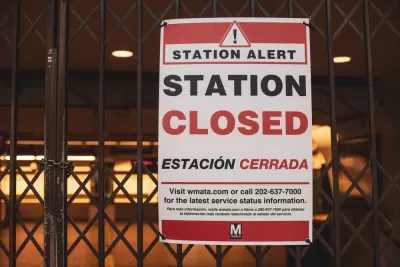As coronavirus infections grow throughout the South and West, governors and local officials will need to consider rolling back their reopenings. Bars and nightclubs closed in Boise on Wednesday in what may be a sign of what's to come.

As posted here June 15, the governors of Utah and Oregon and the mayor of Nashville did something that few other elected leaders have been willing to do: they pressed the "pause" button, if only temporarily, on the reopening of their respective jurisdictions due to rising coronavirus infections. What they didn't do is hit the reverse button.
Also on June 15, local health officials in Idaho's most populous county, Ada, "saw a noticeable increase in COVID cases," states Russell Duke, director of Central District Health, one of seven public health districts within the state of Idaho, in a video statement that accompanies the June 22 source article in the Idaho Statesman. "This trend upward has continued throughout the week."
While initially associated with the reopening of bars and nightclubs, "the infection has reached out further into our communities and has risen to the point of great concern," he added.
"The Board of Health for Central District Health, which covers Ada, Boise, Elmore and Valley counties, met Saturday [June 20] and decided it needed to increase restrictions, Duke said, report Ron Counts, Chadd Cripe and Michael Deeds. The official order [pdf] was released Monday night and announced on the Ada County website:
Ada County Returns To STAGE 3: 500% Increase in COVID 19 cases prompts move
Nightclubs, bars and large venues must close. Gatherings of more than 50 people not allowed. Out of state visitors are required to self-quarantine for 14 days.
The rush to reopen
What's somewhat discomforting is reading that the opening of bars and nightclubs wasn't originally in Phase 3 of the state reopening plan called Idaho Rebounds.
"Originally slated to be part of Stage 4, bars were moved up by Gov. Brad Little when he announced the Stage 2 reopening two weeks ago," reported Jacob Scholl and Ruth Brown for the Statesman on May 28.
He said during a news conference on May 14 that the decision was based on science and not any political pressure. Idaho Lt. Gov. Janice McGeachin, who owns a restaurant and pub in Idaho Falls, has been among the many to speak in opposition to the state’s mandated closures.
Transmission rate
"In Ada County, one infected person is expected to lead to seven more cases versus a typical number early in the pandemic of 2.5, according to Dr. Ted Epperly, a Board of Health member for CDH," add Counts, Cripe and Deeds. "The outbreak is being driven by 18-to-29-year-olds — and up to one-third of them won’t show symptoms, Epperly said."
Epperly uses the term, "infectivity rate" in the widely circulated video statement to describe the transmission rate, which he states is seven, and is often referred to as the reproduction number. The number is incredibly high – "compare it to the Rt of 1.4 to 1.7 for influenza," noted Dr. Tom Inglesby, director of the Center for Health Security at the Johns Hopkins Bloomberg School of Public Health in a May 1 paper published in the Journal of the American Medical Associaton, "Public Health Measures and the Reproduction Number of SARS-CoV-2.
Related in Planetizen:
-
Oregon and Utah Press Pause on Reopening, June 15, 20205
FULL STORY: Ada County to move back to Stage 3 in Idaho’s reopening process after coronavirus spike

Planetizen Federal Action Tracker
A weekly monitor of how Trump’s orders and actions are impacting planners and planning in America.

Restaurant Patios Were a Pandemic Win — Why Were They so Hard to Keep?
Social distancing requirements and changes in travel patterns prompted cities to pilot new uses for street and sidewalk space. Then it got complicated.

Map: Where Senate Republicans Want to Sell Your Public Lands
For public land advocates, the Senate Republicans’ proposal to sell millions of acres of public land in the West is “the biggest fight of their careers.”

Maui's Vacation Rental Debate Turns Ugly
Verbal attacks, misinformation campaigns and fistfights plague a high-stakes debate to convert thousands of vacation rentals into long-term housing.

San Francisco Suspends Traffic Calming Amidst Record Deaths
Citing “a challenging fiscal landscape,” the city will cease the program on the heels of 42 traffic deaths, including 24 pedestrians.

California Homeless Arrests, Citations Spike After Ruling
An investigation reveals that anti-homeless actions increased up to 500% after Grants Pass v. Johnson — even in cities claiming no policy change.
Urban Design for Planners 1: Software Tools
This six-course series explores essential urban design concepts using open source software and equips planners with the tools they need to participate fully in the urban design process.
Planning for Universal Design
Learn the tools for implementing Universal Design in planning regulations.
Heyer Gruel & Associates PA
JM Goldson LLC
Custer County Colorado
City of Camden Redevelopment Agency
City of Astoria
Transportation Research & Education Center (TREC) at Portland State University
Camden Redevelopment Agency
City of Claremont
Municipality of Princeton (NJ)





























